

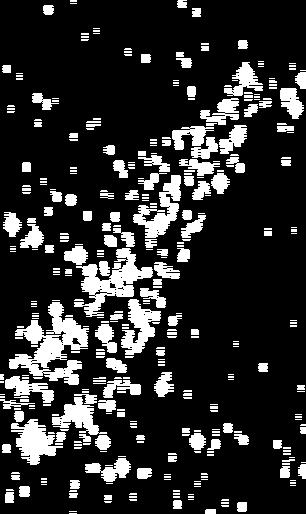


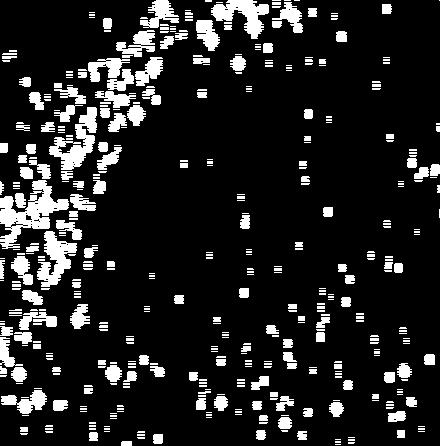

























The structure of this piece consists of three parts, all of which are meditations that arose from being at a skatepark in inner Melbourne and the process of capturing it through a camera lens. The writing style is a blend of personal essay, medita tive poetry and prose. The incorporation of different writing styles in this piece is purposefully constructed not to flow as a reader is used to. The writing is intentionally experimental and eclectic. There are moments that are abrupt and oth ers that build gradually. The style of the piece itself is like a skatepark, it has many personalities, many moods and many vignettes. Skaters learn to wait patiently for their turn on the ramp, they teeter their board over the edge and pause. The reader’s perspective is likewise positioned as if they are on a skateboard, rolling over the peaks and troughs and concrete cracks of the skatepark. The form and composition are equal ly as important as the prose. The visual elements act as the common thread, the cohesion for the piece. My role in the skatepark is to be an observer, a capturer and as this course has articulated for me, a flaneur. I hope that this piece shows how my observations and contemplations bring me my own kind of solace as a part of the skating sub-society.

Oh how I wish I could see beyond the crushing of bones. To feel the flight, feel it without hesitation. Even as I stand at the edge of the skate park watching people go by and waiting to capture the moment they find the air - a moment of free flight held by my camera - it is though I feel the anxiety they lack, on their behalf.


I envy birds in the same way that I envy people who can sing, the admiration extends out to the edge of ‘I never will’.
While Icarus warns of the failings of embodying hubris1, it is the skater’s hubris which allows them to go beyond the boundary of an anxious mind. Disregarding the impulse of the amyg dala and its processed threats allows them to fly closer to the sun, to be seduced by its warmth.
So, I trace back to childhood. Most of my fears are inherited. Like a chronol ogy of encounter, there seems to be a chronology of anxieties arising from youth. Our parent’s cautionary tales im print themselves strongly and prolifer ate in our minds. We pacify their fears and develop our own in the process.
I am a hypochondriac. Perhaps it was my first encounter with anxiety, I know that it came from my Mum and her own fears as the daughter of a nervous radiologist. My friend dislocated her thumb playing AFL last month on the one day I went to spectate against my better instincts. I had to walk her to the hospital twenty minutes away with her thumb outside of its socket. I lasted about 10 minutes in the ER before my capacity to fight my fear of hospitals boiled over and I had to take some deep breaths outside the highly trafficked doors.
I understand that fear is the mind killer2 but the anticipation of anxiety eats you while you are alive and safe. Often those who cautiously position their world in the palm of their hand and grasp it tightly end up letting its joy and spontaneity slip away. Skaters keep their extended fingers pulsing on the Earth at all times but allow their energy to go beyond a tight grasp of it, in doing so they freely fly between the Sun and the Earth.
Anticipating.
Cracked limbs scattered on the pavement
Bone fragments ricocheting, Rebounding like skimmed stones on a concrete sea Neck snaps adjacent to spine Blood seeps through baggy jeans
Skateboard splits in two Jagged wooden edge on each piece may be reformed skillfully like dropped porcelain
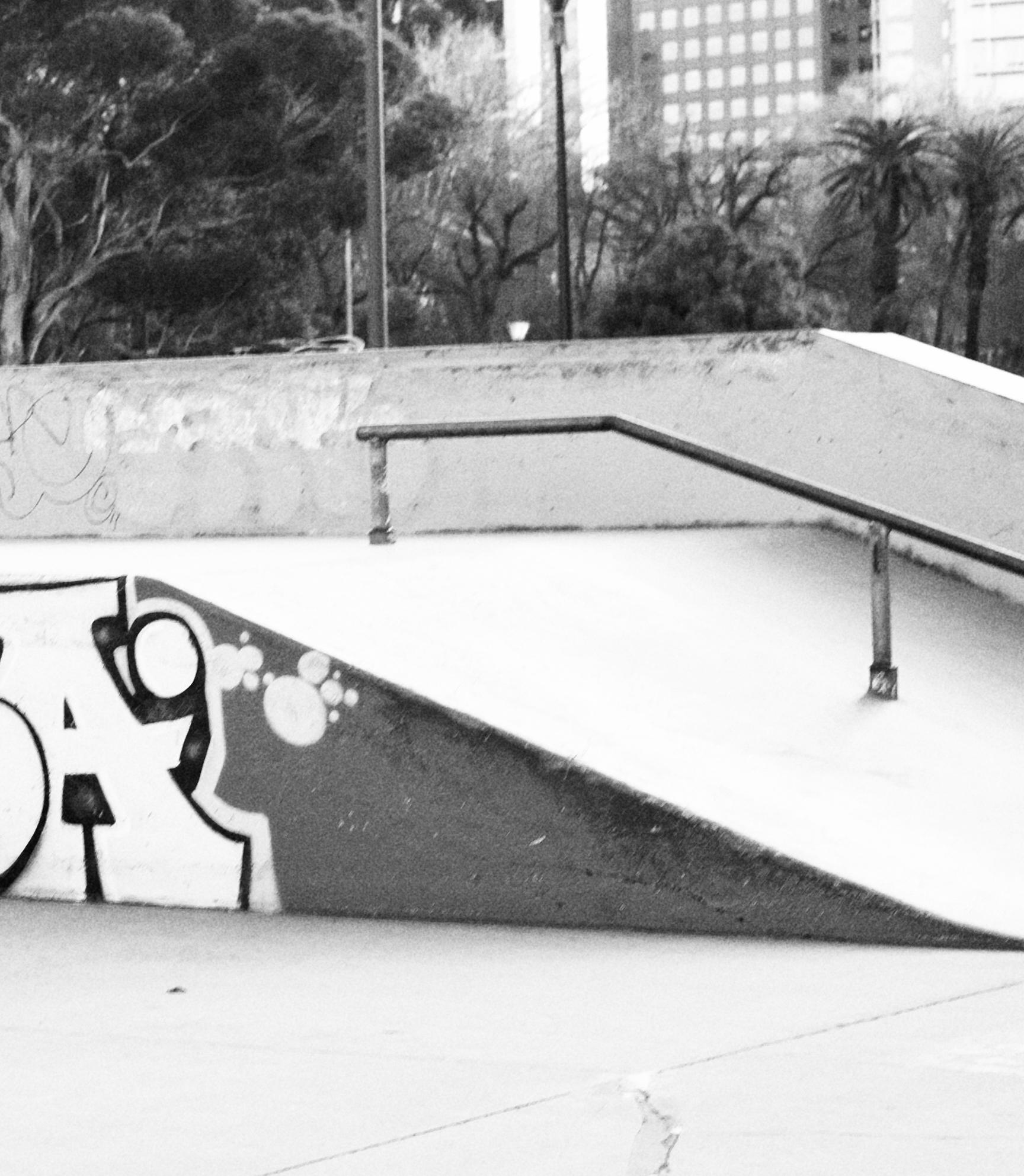
The repair of cracked limbs not in my story
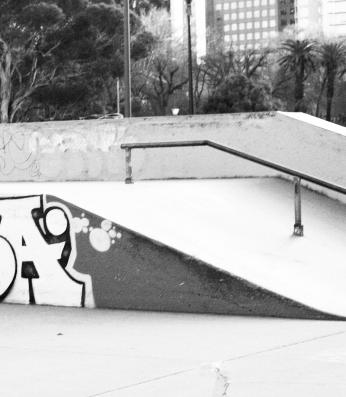
I want to return to childlike freedoms before anxiety.
As a child every thing was amusing
In my grandfa ther’s bathroom I would stare up at the wooden planks lining the walls.
Animals peering at me through the grooves in each plank
A baboon
A spider Moose Elephant
I gave them names I made them matter more than the matter they were - beyond materiality and the inanimate defi nitions of those caught in a dogmatic reality.
Wooden planks may not breathe as they used to as a tree but the eight year old me let everything breathe, biotic or not, I kept a room for mind roaming, mind breathing to freely fly.


If you let it, concrete can become a cushion in your mind - a lack of hesitation enhances your gravity, your likelihood of staying U P R I G H T
My shutter fixed on you your bare gaze glazes the screen a fervent state, a moment to capture, once ephemeral, but preserving your stature. Human commonality, Senseless fracture.
A black and white im age captured through the lens of my camera and made salient through the use of chiaroscuro and high contrast. Both my subject and I stare through a screen, in many ways we are its subject, it depends on us and we depend on it - we are not mutually exclusive. Through my screen, I see him and his screen. A suspended moment of connection. He doesn’t know it, but I do.
My conversations often start in pictures and end with words, an interplay between two artforms that I am com forted by. Artists share stories not only to evoke an emo tional response from our spectators but to comfort our selves. “All writing is basically pictorial...visualization is the way we think. Before words, there were images”3.
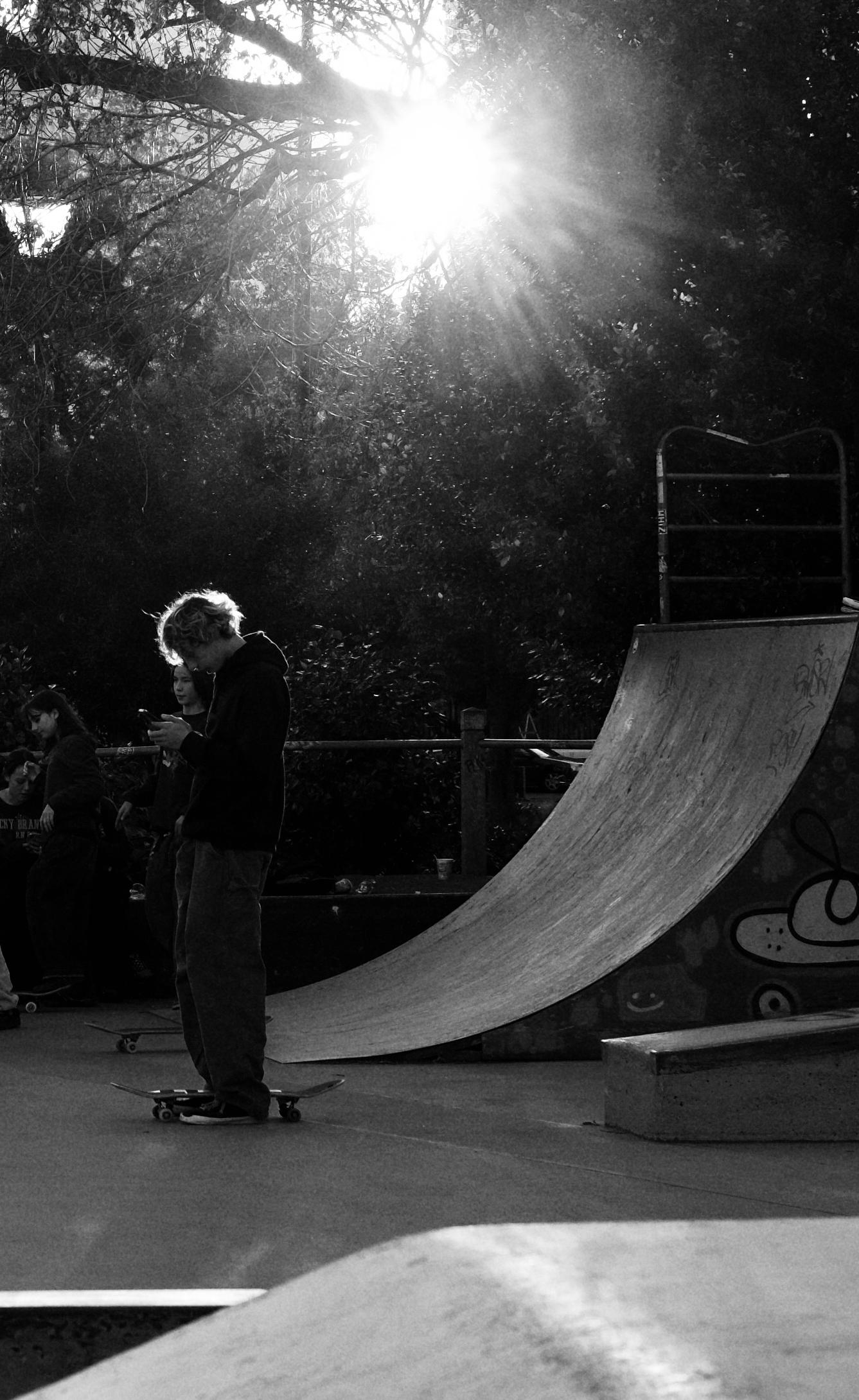
U S P E N D E D M O M E N T S
When I sit and watch the dynamics of a skate park it is like one lone water droplet hits a snare drum and reverberates ten times louder than the drop ever thought it could. I don’t sense ego at the skatepark, it’s a collaborative place, one of both deep solitude and infinite company. It’s whatever you let it be. In collaboration individual hearts beat faster and louder. Any hierarchies that exist are honorable, purely aspirational - never a malicious usage of power over someone with less. After all the etymology of power is simply the ability to do something4, we have given it the connotations that it has, the idea that somebody needs to have more and the other less. Power doesn’t have to be mutually exclusive, and it rarely feels as if it is in skateparks. I think this comes down to the difference of doing vs. being power. Power changes in a skatepark - it no doubt exists but it transcends ego. Exchanges of power are through the exchange of knowledge or the setting of an example. It is permitted to be a mutual transaction, beneficial to both parties. There’s a state of mutualistic symbiosis.

At skateparks you aren’t just there to be a skater, you are a teacher, a student, a fashion stylist, a photographer, a flaneur, a poet and an artist. The state of being two, or three, or four is honoured. It acts as a sub-society, the joining of races, classes, ages and genders. Even masculinity shifts within the subculture. Personal freedom, self expression and cooper ation overshadow aggression, power and competitiveness5. The occupation of space also reforms to the demands of the subculture, to create the necessary canvas for the sub-society. Concrete is a canvas for expression. Tags, epitaphs and embellishments create the stories of the subsociety, and so it becomes a place of belonging, a new home for those who are comfortable within ‘real’ society and those who aren’t. Before I returned to my other home, I sat and watched a dad as he filmed his son on a moving tripod as he attempts a new trick. The concrete became an extension of their physical home too, a canvas for company, for bonding, for a new way of living and flying freely between the Sun and the Earth.

